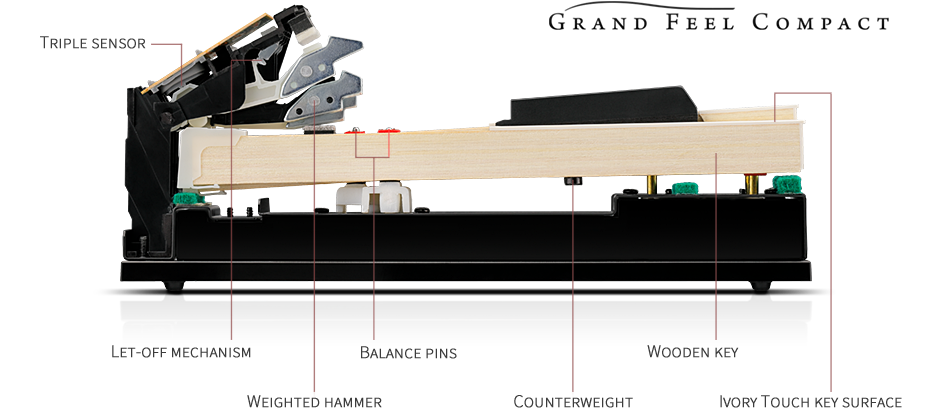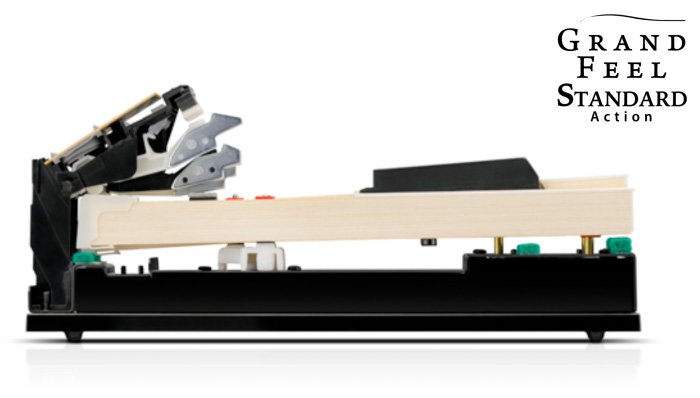Kawai
Kawai CA48 CA-28 Digital Piano
Kawai CA48 CA-28 Digital Piano
Couldn't load pickup availability
Kawai CA48 and CA28 are the same violin, with different models in different countries, but the violin is the same.
🎹 Cheapest all wooden keys (white and black keys are also wooden) digital piano
🎹 Natural wood keyboard (Grand Feel Compact) gives you a more realistic feel
🎹 Top KAWAI SK-EX piano sample PHI tone generator
🎹 Wireless bluetooth midi function can be connected to APP
🎹 Comes with original KAWAI lift chair and earphones
Kawai electric pianos mainly include high-end CA series and mid-level CN series, and ES desktop models (with rhythm and accompaniment functions) for entry-level pianos, covering high, medium and low-end product lines (CL and KDP are obsolete product lines, currently It can no longer be seen on the official website of Kawai in Japan).
The characteristics of the brand are similar to those of their own pianos. The touch of the keyboard is thick and slow, not like Yamaha's bright.
The timbre is also relatively calm and solid (but also a bit dull), not as bright and fast as Yamaha's. The timbre and flavor of the two brands are different, which just reflects the different tastes of the two musical instrument factories. Just like different brands of speakers/audio equipment, the direction of sound is different to reflect their own sound aesthetics.
If you want to know the sound of the KAWAI electric piano, it is best to play it on the spot, because according to my own experience of the piano, the sound of the product introduction video on YouTube is slightly different from the sound of the actual electric piano.
KAWAI's electric piano, like Yamaha, pays great attention to the keyboard system. The Grand Feel II used in its high-end products is a highly praised keyboard system in the past two years, and the electric piano with wooden keys is also the most competitive price with its KAWAI CA48/CA17, so the sales have been very good, it is considered a mid-to-high-end. The most cost-effective piano alternative among electric pianos. As far as the keyboards of the electric pianos at all levels are concerned, it seems that they have more functions than the Yamaha counterparts.
In addition, the new series of CA and CN37 ES-110, also incorporate Bluetooth function. In contrast, the Y and C models imported from Taiwan have no Bluetooth function, which is obviously not as good as KAWAI (but at the time of writing, the Taiwanese agent Donghe has not released the new CA, and I am not sure whether the Taiwanese version of the Bluetooth function will be included).
KAWAI's keyboard system includes GF2, GF, RM3G2 with wooden key system, and RH3, RHC, AHA with plastic key system.
Compared with the GF, the GF2 mainly adds an ebony touch surface to the black keys and improves the hammer weight, but both have progressive hammers, balanced weights, ivory touch white keys, and escapement mechanism (Let. -off mechanism) with three sensing points. The RM3G2 is GF's previous generation strike system. The fulcrum is closer to the middle of the key than GF, and the distance from the end of the key to the fulcrum Balance pins is also shorter, and the rest are similar to GF.




Other keyboards like RH3, RHC are plastic keys, the keys are much shorter and the hammers are below the keys. The hammer weights of the RH3 keys are progressively heavier from treble to bass to accurately mimic the characteristics of real piano keys. But Ju Yong is not sure whether it is a step-by-step or a key-by-key increase. Because English is graded hammer (from GF2-RH).
RH3 has an ivory touch surface, three sensing points and escapement mechanism, and counterbalancing, which should be similar to counterweight. As for RHC, it is the abbreviation of Responsive Hammer Compact, which is simulated with less spring mechanism and more stable structure. The touch keys are lighter and smaller, and are suitable for use in portable digital pianos such as the ES110AHA. AHA is an older keyboard system, but the hammer weights are also graded.


In October 2017, the CA series underwent a facelift, replacing the 97, 67, and 17 of the previous generation with CA98, 78, and 48. Including new audio sources, new timbres, color touch panels, adding Bluetooth, and the expansion circuit in cooperation with ONKYO are all highlights. Unfortunately, the keyboard has not evolved any further, and the speakers have only been updated with CA98 (but the difference can not be compared on the spot. I listen to it) not very much). Compared with the updated GrandTouch keyboard launched by Yamaha last year, which is also known as the longest key, KAWAI seems to have lost its original advantage.
The gap between its flagship CA98 and CA78 is still the same as the previous generation, only the difference between castanets and speakers (mainly in low frequency), and 9 more timbres, the difference is not very obvious. Unlike the Y brand, there are differences in the keyboard, tone, and speakers.

Perhaps because of this factor, it is a pity that Donghe Musical Instruments, which is represented by Taiwan Kahe, has never displayed the top-level piano CA97 (maybe the CA98 will not be displayed in the future). The new model is more inconsistent with the CA48. Although the keyboard has been upgraded from RM3G2 to GF [Note], the sound source has been downgraded to the same PHI sound source as CN37 and CN27.

The timbre is also not like the CA98, 78 has increased compared to the previous generation. On the contrary, CN37 has 364 kinds of tones, which is much larger than CN27, so the difference between the two models is obvious.
product description
Share






